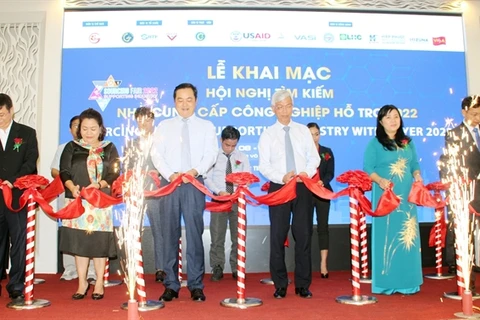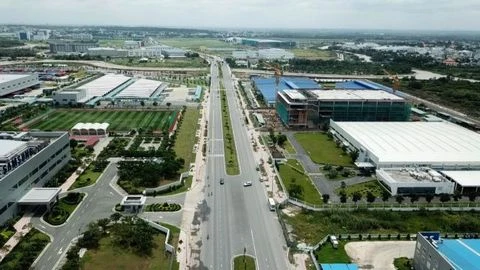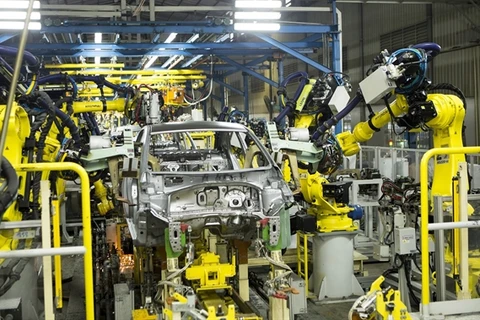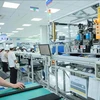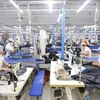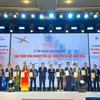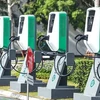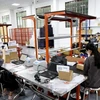 A worker at Cat Van Loi Industrial Electrical Equipment Manufacturing JSC in HCM City. The city needs skilled workers to meet the plan to increase production at the end of the year. (Photo courtesy of the firm)
A worker at Cat Van Loi Industrial Electrical Equipment Manufacturing JSC in HCM City. The city needs skilled workers to meet the plan to increase production at the end of the year. (Photo courtesy of the firm) According to statistics from Ho Chi Minh City's Department of Industry and Trade, industrial production in the city continued to grow in November. In the first 11 months of 2022, the city's index of industrial production (IIP) was estimated to increase by 15.7% compared to the same period last year. The IIP of four key industries is estimated to increase by 21.7%.
In this growth momentum, enterprises have been more proactive in terms of labour, production, and business plans, overcoming difficulties to prepare goods for the New Year and the Tet (Lunar New Year) holidays.
As the demand for recruiting more workers to serve domestic production and exports, Tran Minh Tu, General Director of Kem Nghia Joint Stock Company, said that the company is planning to increase productivity from 31,000 products per day to 40,000 products per day, so it needs to recruit 500 more workers. However, since the beginning of the year, only 400 have been recruited.
As Cat Van Loi Industrial Electrical Equipment Manufacturing JSC needed skilled workers to meet its plan to increase production and fulfill orders for key projects in Japan and Singapore, Mai Huu Lam, the firm's general director, said that the company regularly cooperates with universities and colleges to receive students as paid interns, training and recruiting them for their operation.
While the demand for skilled workers in HCM City is large, businesses, especially those in the supporting industry, are facing a "brain drain" for skilled workers.
Luu Dinh Thinh, Marketing Director of CNS Amura Co., Ltd, told local media that his firm operates in the field of precision mechanics and owns some of the most modern machinery and equipment in Vietnam, so it is necessary to have skilled personnel to operate the machines.
He said: "We take at least six months to train machine workers, continue to train for an additional three months each year, with good remuneration, but still inevitably lose people because other businesses are willing to pay high salaries to get them."
Solutions needed
The Centre for Forecasting Human Needs and Labour Market Information HCM City (FALMI) forecast that in the last three months of 2022, the city's enterprises will need about 69,500 - 77,100 employees. Most businesses have a need for skilled and trained workers.
According to FALMI, in the 2022-2026 period, the city will focus on developing high-tech industrial parks, which require a lot of workers with high technical qualifications, as well as industries based on current technology and equipment.
The city will continue to develop four key industries, with human resource demand accounting for 23.22% of the total annual labour demand in the period. It is forecast that HCM City will have about 271,500 - 322,900 jobs each year.
Experts consider human resources to be one of the important factors in developinh the four key industries to help HCM City recover and grow in the coming years.
To achieve the goal of sustainable human resource development in both quantity and quality, meeting the requirements of enterprises, State management agencies need to build a system of legal documents on human resource development, vocational training, and perfect the education system in the direction of openness and integration, said experts.
In addition, enterprises must always consider employees as partners, jointly creating the success and development of the enterprises, they said./.
VNA

